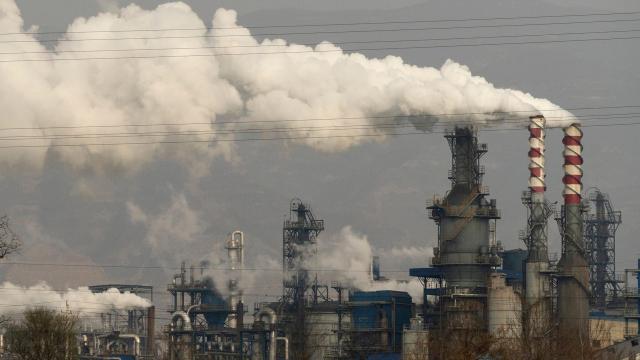The fossil fuel industry has a big methane problem — and we’re only just beginning to realise how serious it is. The International Energy Agency released a new analysis Wednesday finding that methane emissions from energy production are being severely undercounted and are up to 70% higher than official estimates provided by countries around the world.
While methane stays in the atmosphere for a much shorter time than carbon dioxide, it packs a real punch while it’s up there — it’s about 80 times more potent over a 20-year period. Reducing methane emissions as soon as possible is key to warding off the worst impacts of climate change. The oil and gas industry is responsible for a big chunk of methane emissions, from processes during production including venting and flaring — releasing excess gas into the atmosphere — as well as leaks (that can be substantial) along the supply chain.
Unfortunately, according to this new report, we’re working with some seriously inaccurate numbers while trying to fix this problem. The IEA, one of the most important energy research bodies in the world, provides reports and outlooks that are used as the basis of major decisions from all sorts of financial organisations, governments, and major fossil fuel companies. This analysis, which relies on satellite observations and statistical modelling, for the first time factored methane emissions from coal mining and production into its figures, bumping up China, whose coal industry is a big source of methane, into first place of all the emitters in the world. And while global methane emissions dropped by 10% in 2020 as the world shut down due to the coronavirus pandemic, they’re headed back up: emissions increased 5% last year from 2020’s baseline, the IEA reported.
Not all fossil fuel-producing countries are created equal. The IEA noted that big oil-producing powerhouses in the Middle East have “relatively low emissions intensities” of methane, with few major leaks; meanwhile, Turkmenistan and other oil- and gas-producing parts of Central Asia producing huge amounts of leaks. The U.S., meanwhile, is the third largest emitter of methane from fossil fuel production, thanks in large part to emissions from the explosion in oil and gas production in Texas’s Permian Basin.
Curbing methane emissions from oil and gas production has long been seen as a “low-hanging fruit” climate solution: We know how to fix leaks and plug holes, and producers can find ways to better regulate and eliminate venting and flaring. What’s especially frustrating about the IEA’s update is that the oil and gas industry is actually losing money by being so bad at methane control. As gas prices are rising, the IEA pointed out, the industry would stand to benefit from tightening up its production processes and sell all that extra gas.
Despite the overwhelming evidence of the net benefits of methane regulations and oil and gas producers’ pledges that they’re working hard to fix the problem, big polluters are still dragging their feet on actually having anyone regulate or more closely observe emissions from their activities. In October, Sen. Joe Manchin reportedly targeted a proposal in the beleaguered Build Back Better Act that would have much better regulated methane emissions from the oil and gas industry; getting the methane provisions out of the bill was an ask from the oil and gas industry, which doesn’t want regulation of any kind getting in the way of business.
There’s a little bit of good news in the report. Compared to 2019 levels, emissions from fossil fuel production in 2021 were down 2%, suggesting that industry work to curb leaks and increased attention from policymakers may be working. In Glasgow last year, countries signed a first-of-its-kind pledge to reduce global methane emissions 30% by 2030. Progress!
But the world also needs to start paying much closer attention to what is actually going into the atmosphere — and start treating methane from fossil fuel production like the serious threat it is. Of the top five international methane emitters outlined in the report — China, Russia, the U.S., Iran, and India — only the U.S. is on the 2030 pledge. And if Manchin is any indication, we’re doing a pretty bad job of holding polluters accountable.
Editor’s Note: Release dates within this article are based in the U.S., but will be updated with local Australian dates as soon as we know more.
